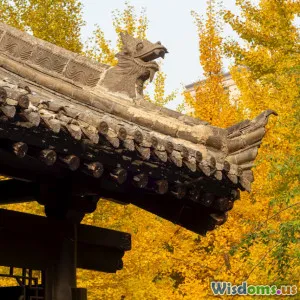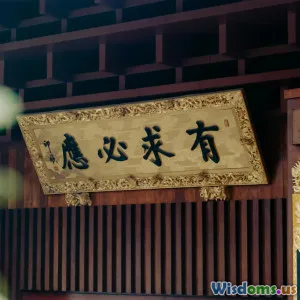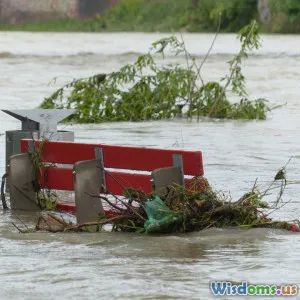
What Triggered the Rise of the Shang Dynasty Along the Yellow River?
7 min read Explore the key factors that sparked the Shang Dynasty's rise along the Yellow River, blending environment, innovation, and socio-political change. (0 Reviews)
What Triggered the Rise of the Shang Dynasty Along the Yellow River?
The Yellow River, often dubbed the "Cradle of Chinese Civilization," witnessed the unlocking of one of ancient China's most transformative civilizations: the Shang Dynasty. Flourishing from approximately 1600 to 1046 BCE, the Shang laid foundational structures in government, culture, and technology that shaped Chinese history for millennia. But how and why did this dynasty rise powerfully in this particular river valley?
This article delves into the multifaceted triggers behind the Shang's ascendancy along the Yellow River, articulating the environmental, technological, social, and political catalysts that propelled its emergence.
1. The Yellow River: Fertile Cradle and Strategic Location
The Yellow River (Huang He) stands as a persistent force in China's development. Its frequent floods deposited fertile loess soil ideal for early agriculture. This natural richness was crucial for sustaining large populations and enabling food surpluses.
Environmental Advantages:
- The fertile loess plains offered exceptionally arable land.
- The river provided water for irrigation, boosting agricultural yields.
- The surrounding terrain encouraged settlement concentrated around access points.
Historical hydrological data show waves of flood and soil deposition created a cycle of destruction and regeneration leading to long-term fertile basins, encouraging communities to adapt sophisticated flood management systems. Thus, human settlement gradually transitioned from fragile clan groups to organized city-states.
2. Agricultural Innovation Catalyzing Social Complexity
Archaeological sites such as Erlitou (associated with early Shang culture) unearthed evidence of millet and rice cultivation dating back over 4,000 years. But more significantly, the Shang period revealed advancements including:
- Irrigation infrastructure: wells, canals, and reservoirs managing the Yellow River's unpredictable floods.
- Plough advancements: improved tools enhancing land cultivation.
- Domestication: animal husbandry supported food variety.
Higher food production allowed population growth and craft specialization. With surplus came social stratification—a priestly and ruling elite began emerging supported by artisans and farmers. This set the ground for centralized governance.
3. Emergence of Writing and Record-Keeping
A definitive marker of the Shang rise was the advent of one of the earliest known writing systems—oracle bone script. Inscriptions on ox scapulae and turtle shells revealed:
- Record-keeping for agriculture, taxation, divination, and military affairs.
- Propagation of religious and political authority through divination.
The oracle bones provided clear evidence of an organized and literate state apparatus, refuting the misconception of prehistoric chaos in favor of a structured Shang society. As historian Kwang-chih Chang noted, “Writing was the seed of history,” allowing administration and culture to thrive.
4. Military Organization and Political Alliances
The consolidation of power along the Yellow River was marked by military innovation. Archaeologists uncovered:
- Bronze weaponry, including dagger-axes and chariots, reflecting technological superiority.
- Fortified cities and walled settlements (e.g., at Anyang) indicating organized defense.
Military prowess allowed the Shang rulers to unite local groups, extend influence, and solidify bureaucratic control. Political alliances were crucial, as evidenced by regional elites pledging loyalty to the Shang king.
5. Religious Beliefs and Divine Authority
Religious ideology was pivotal in legitimizing Shang rule. The tribe’s close relationship with ancestors and the divine helped reinforce the king’s role as the intermediary between heaven and earth. Oracle bones reveal:
- Sacred rituals and ceremonies tied to agriculture and warfare.
- The belief in the “Mandate of Heaven,” granting religious justification for rulership.
Religious grandeur unified disparate groups and supported a centralized theocracy, a key pillar for the dynasty’s stability and power.
6. Trade Networks and Cultural Diffusion
The Shang Dynasty's rise was enhanced by interstate trade and cultural exchanges along the Yellow River and beyond. Bronze artifacts, jade carvings, and pottery styles illustrate:
- Trade with neighboring cultures such as the Yangshao and Longshan.
- Exchange of technologies like bronze-smelting and weaving.
Economic interaction not only enriched Shang elites but also spread cultural ideas that fostered innovation and statecraft.
Conclusion: An Interwoven Tapestry of Factors
The rise of the Shang Dynasty along the Yellow River was no accident; it was the outcome of varied, interlinked conditions—natural environment, agricultural advancements, social stratification, writing development, military power, religious ideologies, and trade dynamics.
By leveraging the Yellow River's unique advantages, the Shang created a sophisticated civilization that laid iconic foundations for Chinese culture and governance. Their story reminds us how geography, technology, and human ambition intertwine to shape history.
Exploring the Shang’s emergence encourages us to appreciate the complexities behind every civilization’s rise and how multifaceted elements drive societal transformations.
References:
- Keightley, David. The Ancestral Landscape: Time, Space, and Community in Late Shang China. Berkeley: University of California Press, 2000.
- Chang, Kwang-chih. The Archaeology of Ancient China. Yale University Press, 1986.
- Higham, Charles. The Bronze Age of Southeast Asia. Cambridge University Press, 1996.
By understanding the root causes that triggered the Shang Dynasty's rise along the Yellow River, modern readers gain insights into how ancient innovations and environmental factors shape lasting legacies.
Rate the Post
User Reviews
Popular Posts




















